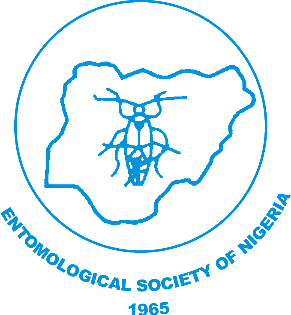
Toxicities of Desert Dates and Moringa Seeds Essential Oils on Helicoverpa armigera Hub (Lepidoptera: Pyralidae) Larvae under Laboratory conditions
NJE Vol. 40(2): 1-14, 2024
DOI.10.36108/NJE/4202/04.0210
Abdullahi, G.*1, Sule, H.2 and Yerima, H. A.2,3
1Department of Crop Protection, Faculty of Agriculture, Modibbo Adama University, Yola, Adamawa State,
Nigeria
2Department of Crop Protection, Bayero University Kano, Nigeria
3Ministry of Agriculture and Natural Resources, Damaturu, Yobe State, Nigeria
Correspondence email: gatsaranyi@yahoo.com; abdullahigambo@mau.edu.ng ORCID:0000-0002-5636
Abstract
Production of tomato, Solanum lycopersicum worldwide is being threatened by Helicoverpa armigera Hub., and farmers rely heavily on the use of costly hazardous synthetic insecticides for its management. The prime concern in increasing production of tomato is the obstacles posed by H. armigera and lack of sufficient understanding of available environmentally friendly control materials which are essential for the development of reliable integrated pest management strategies. The present study was conducted with the objectives of determining the toxicities of desert dates and moringa seed essential oils (EO) on the larvae of H. armigera. The two (2) EOs were obtained by distillation and evaporation techniques. Toxicity studies were conducted at the Entomology laboratory of the Department of Crop Protection, Bayero University Kano. Fruits and leaves of tomato plant were sprayed with different concentrations of 2%, 4% and 6% of the essential oil extracted from the plant and acetone was used as control, cypermethrin (synthetic insecticide) was used as a standard check. The treated plants parts were allowed to dry for 15 to 20 minutes under laboratory condition. Ten 3rd instar larvae of H. armigera were introduced into the container covered with muslin cloth and allowed to feed. Observation on larval mortality was made at 24, 48 and 72h post introduction. EOs composition was analysed using GC-MS for qualitative and quantitative determination of the biomolecules present. Results of the toxicity of the essential oils show both oils caused mortality of the larvae. The GC-MS analysis shows 1-Methylpentyl cyclopropane (Monoterpene) as the dominant compound in both essential oils. Two percent (2%) EO of balanites is recommended for application on both the fruits and leaves of the tomato plant to control H. amigera.
Keywords: Helicoverpa armigera, Solanum lycopersicum, Essential Oil, Cypermethrin, Moringa
